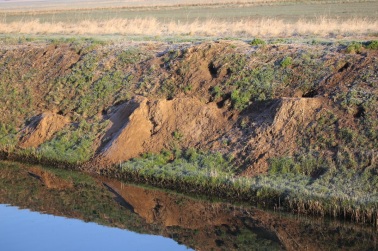The debate about Badgers
Posted: December 1, 2013 Filed under: countryside, local interest, weather and wildlife | Tags: badger, badger cull, Badger culling in the United Kingdom, brock, countryside, cull, Natural England, sett Leave a commentThe trial badger cull ended yesterday after Natural England decided that the numbers culled did not achieve those required to test if culling would prevent the spread of Bovine TB in cattle. We won’t know whether it has had an impact (positive or otherwise) for quite some time to come I expect but I think we do know that the killing of badgers during the licensed period was a complete waste of wild life.
Whatever your feelings about what the solution is to this particular problem, there is no doubt that the british cattle farmer is facing a difficult road ahead because there is a very definite affect on farmers from Bovine TB throughout the British Countryside.
Where we walk there is lots of evidence of Badger activity. We never see the badgers themselves but it is lovely to know that they have been about their business before we arrived.
The same badgers that leave the tell tale signs are hidden away in their cosy setts when we go out and we would need to sit in a hide (I am very tempted to camp out one night to be able to watch them) for long hours to stand any chance of catching them when they did venture out.
We know they are there though. We see their footprints, their scrapings from food foraging, their numerous territory markers (where they dig a hole and leave their droppings) and there are lots of entrances to their setts along the dike sides.
They are interesting and odd looking burrowing creatures when compared to lots of our british wildlife. They are nocturnal, strangely coloured (for our environment) and are seemingly related to weasels and wolverines.
They look like they should be carnivores but they are omnivores and so are as happy eating roots as worms. Bizarre when you consider how viciously well equipped they are for the life of a carnivore.
They are incredibly strong, make good parents and although they can be solitary, they mostly live communally. We’ve all seen the cute footage on wildlife programmes where they are filmed socialising and playing in mixed family groups at the neck of their setts..
They are a ferocious creature with the capability of inflicting a lot of damage with their might and their mouths. These qualities and their fight to the death defence strategy have very sadly meant they have been used to fight dogs. This, thankfully for both dog and badger, has been illegal for some time now (though I suspect this horrible activity still goes on somewhere).
Because Badgers are complex and look a little out of place; they fascinate me and I would love to be able to observe our local population one day.
The thought of this peculiar shaped, omnivorous mammal with mad markings being eradicated or driven out of farming areas entirely because a sensible solution to address the issue of Bovine TB can’t be found, doesn’t sit well with me.
I do not know what the solution is but I do know that we need to stop bulldozing problems and find a much more inclusive way to balance these things out. I really hope that there is an effective, none invasive way forward that deals with the problem both the badgers and the farmers of the UK face.




